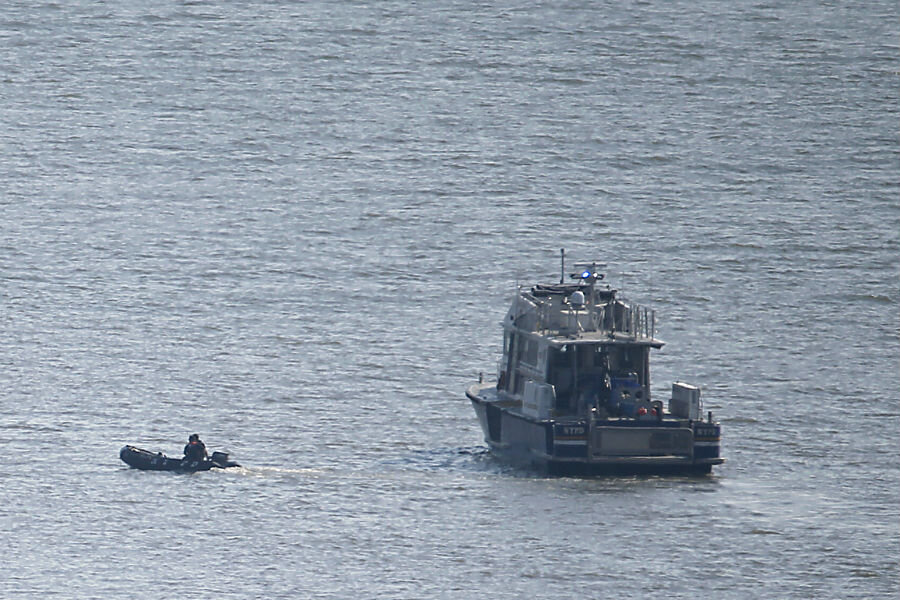Vintage P-47 aircraft crashes in Hudson River, pilot killed
Loading...
| New York
Police divers were expected to begin raising the wreckage Saturday of a vintage World War II plane that crashed into the Hudson River between New York and New Jersey, killing the pilot.
The P-47 Thunderbolt crashed Friday during a promotion for the American Airpower Museum, which is celebrating the 75th anniversary of the P-47 this weekend.
Scuba divers recovered the body of the pilot, 56-year-old William Gordon, of Key West, Florida, about three hours after the crash.
Gordon was a veteran air show pilot with more than 25 years of experience, according to promotional material for a Key West air show last month. The website for the April 2-3 air show says Gordon was an "aerobatic competency evaluator" who certified performers to perform low-level aerobatics.
The New York Daily News reported that Gordon was originally from upstate Copake, in Columbia County, and "had spent years as the Chief Pilot of the Old Rhinebeck Aerodrome and had recently flown in a show near his new home in Key West, Florida."
The single-seat P-47 crashed on a part of the river near where a US Airways commercial jet carrying 155 people splash-landed safely in 2009 in what became known as the Miracle on the Hudson.
A witness to the crash, Hunter College student Siqi Li, saw smoke spewing from the plane and thought it was doing a trick.
"It made kind of a U-turn, and then there was a stream of smoke coming from it," Li told the Daily News. "It was tilting down toward the water. I thought they were doing some sort of trick. I didn't realize it at first, but it was a plane crash."
Carla Nager told the New York Daily News that she was standing on her terrace at an apartment complex in Edgewater, N.J., with her husband when she heard “a sputtering” that sounded like an engine stalling.
“It wasn’t a nose dive, but he was descending rapidly,” Nager said. “He just came down, and boom, he was gone.”
The Federal Aviation Administration said the aircraft, which went down near the George Washington Bridge around 7:30 p.m., was among three planes that had departed from Republic Airport in Farmingdale, on Long Island, just east of New York City. The other two aircraft returned to the airport and landed safely.
Museum spokesman Gary Lewi said the plane was kept at the museum and was taking part in an air show at nearby Jones Beach this weekend.
The P47-Thunderbolts were the heaviest single-engine fighter planes used by Allied forces in World War II. They first went into service in 1942, with the 56th Fighter Group based on Long Island.
The one that crashed in the river flew periodically, including to other air shows, Lewi said.







